Training camps don’t start until mid-September.
At least 30 serviceable free agents are still available — enough for one per team.
However, by and large, the off-season work in terms of roster building is already complete.
That means, on paper, pundits can start predicting the future and the direction each of the NHL’s 31 franchises are trending for the 2017-18 season — be it up, down or staying the course.
This is the second of a three-part series, focusing on 10 teams that appear to be trending down:
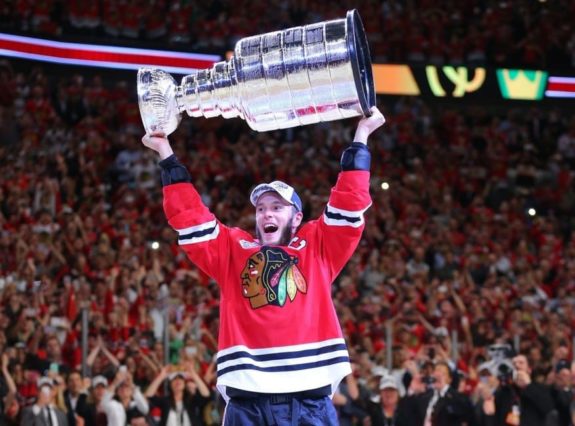
The “dynasty” days are likely done for Jonathan Toews and the Chicago Blackhawks, with more and more youth being injected into the lineup to surround an aging core because of the salary cap.
1) Chicago Blackhawks
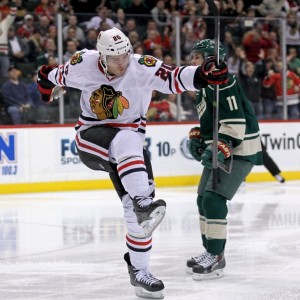
The Blackhawks are getting the band back together this offseason, re-acquiring Brandon Saad (above) from Columbus and signing Patrick Sharp as a free agent, but those moves won’t necessarily make Chicago a better team.
The Blackhawks could be in trouble, partly because the competition in the Central Division is mostly improving — especially Dallas and Nashville, the latter of whom swept Chicago in the first round of the playoffs. But also because Stan Bowman’s roster shakeup may not produce the desired results.
The Blackhawks have essentially traded Artemi Panarin, Marian Hossa, Niklas Hjalmarsson, Trevor van Riemsdyk, Marcus Kruger and Scott Darling for Brandon Saad, Patrick Sharp, Tommy Wingels, Lance Bouma, Connor Murphy and Anton Forsberg this offseason. Not many GMs, besides Bowman, would make those swaps — though Hossa for Sharp wasn’t by choice. Regardless, Chicago is now worse on paper and the competition is better.
Patrick Kane is probably going to miss Panarin to some degree, but Jonathan Toews will likely benefit from Saad’s return. Hjalmarsson might be the biggest loss — just ask head coach Joel Quenneville — and the already overworked Duncan Keith and Brent Seabrook are another year older and not necessarily getting better with time. Ditto for Corey Crawford in goal.
Chicago will be “harder to play against” this coming season, but not as skilled or as deep, so that won’t likely be a recipe for success. The Blackhawks’ dynasty window seems to be closing before our eyes, but they should still be a playoff team in 2017-18.
2) Washington Capitals
Another team with nowhere to go but down, the two-time reigning Presidents’ Trophy-winning Capitals went all-in and busted last season before losing the likes of Kevin Shattenkirk, Karl Alzner, Justin Williams and Marcus Johansson as salary-cap casualties and Nate Schmidt in the expansion draft.
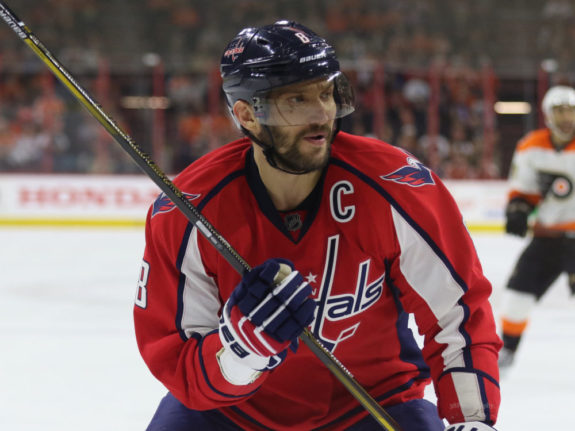
Alex Ovechkin is arguably past his prime and his focus might be more on finding a way to represent Russia in the Olympics than finding a way to win Washington a Stanley Cup in 2018.
Washington’s defence is significantly weaker, but Brian MacLellan has been more focused on re-signing T.J. Oshie and locking up both Evgeny Kuznetsov and Dmitry Orlov to long-term deals. Nothing wrong with that — they are three key pieces to the puzzle — but the Capitals’ depth is going to be tested this coming season, especially on the back end. The likes of Taylor Chorney, Madison Bowey, Christian Djoos and Aaron Ness are going to get playing time if MacLellan doesn’t make any additions between now and training camp. That might not be a bad thing, but Shattenkirk, Alzner and Schmidt are leaving big shoes to fill.
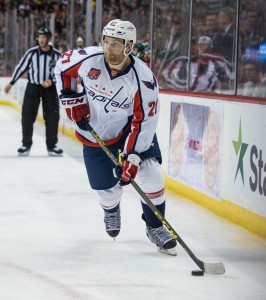
It’s also debatable whether Karl Alzner is underrated or overrated as a defenceman, but the Capitals will certainly miss his presence in their top four.
Up front, Devante Smith-Pelly and Tyler Graovac bring more “jam,” but the Capitals are going to need increased offence from Andre Burakovsky, Lars Eller, Brett Connolly, Tom Wilson and Jakub Vrana to offset the losses of Williams and Johansson. Perhaps a prospect like Riley Barber can step in and provide a jolt too, but Alex Ovechkin isn’t getting any younger, lighter or faster.
Braden Holtby and Philipp Grubauer will continue to be one of the league’s top goaltending tandems, and Barry Trotz won’t let the bottom fall out of this team, but another 100-plus point season is no certainty. A playoff spot shouldn’t be in jeopardy, but Washington will no longer be as popular of a pick for the Stanley Cup as in recent years.
3) Florida Panthers
This team has a ton of holes up front, with five of its top-nine forwards from last season no longer in the fold — Jaromir Jagr, Jussi Jokinen, Reilly Smith, Jonathan Marchessault and Thomas Vanek.
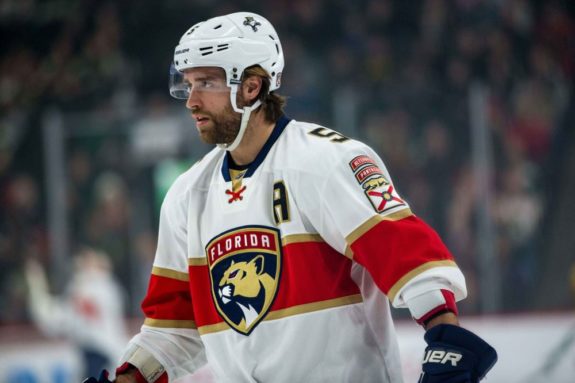
Aaron Ekblad and the defence won’t be an issue for Florida, but where is the offence going to come from? That is the biggest question mark surrounding the Panthers for 2017-18.
Last summer, the Panthers overhauled their defence and this year it is the offence, but the replacements are largely unproven — presently highlighted by Radim Vrbata and European signings Evgeni Dadonov and Henrik Haapala, plus Denis Malgin and Colton Sceviour, or possibly Owen Tippett, Jared McCann, Jayce Hawryluk, Connor Brickley, Maxim Mamin or Sebastian Repo.
Those are downgrades across the board and don’t instill much confidence in the Panthers’ playoff chances after missing the postseason by 14 points in 2016-17. Starting 2017-18 with a healthy Jonathan Huberdeau, Aleksander Barkov and Nick Bjugstad will help, but that is still a depleted forward group with a lot of question marks. Vincent Trocheck returns to round out the new-look top nine, but that is a lot of turnover for new coach Bob Boughner to mould into a winning lineup.
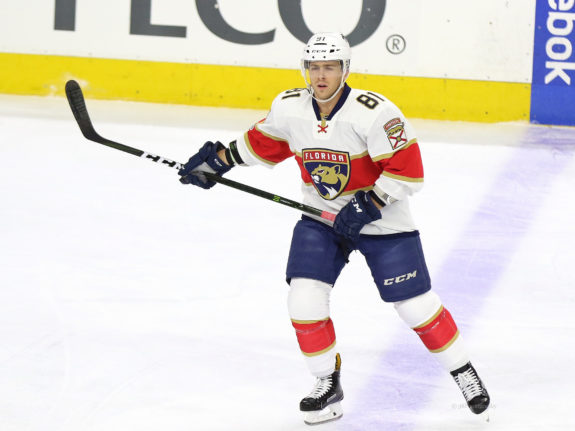
The real head-scratcher here was Florida exposing and losing 30-goal breakout sensation Jonathan Marchessault in the expansion draft.
Boughner will be a better fit for the defence — especially Aaron Ekblad, Alex Petrovic and Mark Pysyk, but also Keith Yandle, Jason Demers and Michael Matheson. That’s a solid top six on the back end, and the goaltending should average at worst with the returning tandem of Roberto Luongo and James Reimer.
It’s the offence that is likely going to fail Florida, unless Dale Tallon can wheel and deal his way into a ringer or two.
4) Detroit Red Wings
All good things must come to an end and now that Detroit’s quarter-century playoff streak is over, it looks like the Red Wings could finally be entering a rebuilding phase.

Henrik Zetterberg has to be growing frustrated with Detroit’s downfall since Mike Babcock’s departure, and if this season doesn’t go any better, Zetterberg might want a change of scenery too.
Pavel Datsyuk headed home to Russia prior to last season and Henrik Zetterberg isn’t the same player despite still being the face of the franchise. Johan Franzen will likely never play again due to post-concussion symptoms and Niklas Kronwall is nearly done too due to knee problems. Jimmy Howard had a bounce-back campaign and was surprisingly protected over Petr Mrazek for the expansion draft, but that old guard is clearly on its last legs.

Jimmy Howard is apparently back to being the Red Wings’ starting goaltender, but that doesn’t instill a ton of confidence from the outside looking in.
The next wave of talent, including Mrazek and forwards like Tomas Tatar and Gustav Nyquist, haven’t taken the torch as hoped. They may no longer be part of the future in Detroit, with the Red Wings now ushering in a new era headlined by Dylan Larkin, Anthony Mantha and Andreas Athanasiou, plus some members of the AHL champion Grand Rapids Griffins like Tyler Bertuzzi, Evgeny Svechnikov and Martin Frk.
The roster, as a whole, doesn’t have the same ‘wow’ factor that Detroit is accustomed to, and Jeff Blashill hasn’t been able to fill Mike Babcock’s coaching shoes either. So despite a new arena on the horizon, Ken Holland may have to blow it up and start from scratch over the next few years.
If that’s the case, expect the Red Wings to emerge as sellers this coming season — Mike Green will be their biggest trade chip — and perhaps sink to the depths of the draft lottery. The 2018 NHL draft is loaded with elite talent — most notably, Svechnikov’s younger brother, Andrei, and Swedish defender Rasmus Dahlin — so this wouldn’t be the worst year to bottom out.
5) Ottawa Senators
Don’t be fooled by this team’s improbable run to the Eastern Conference final, the Senators aren’t built to win any time soon. They overachieved, just by making the playoffs, and it won’t likely happen again. Well, another post-season berth shouldn’t be ruled out, but Ottawa isn’t a playoff lock by any means.
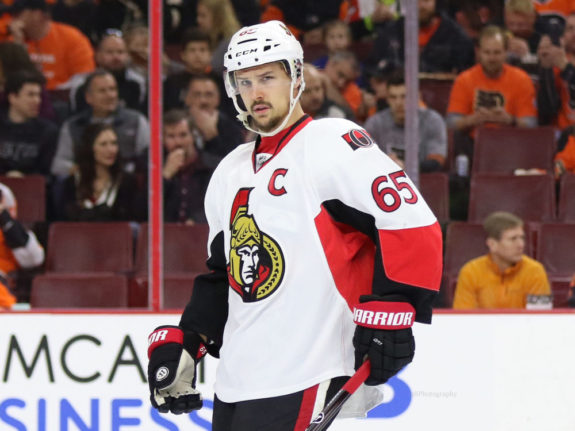
Erik Karlsson is proving to be not only one of the league’s best defencemen, but also one of the best leaders — playing through pain in captaining Ottawa to the East final last season. A repeat performance, healthy or not, is a tough ask.
Guy Boucher and Marc Crawford had the magic touch as first-year coaches, and Craig Anderson was terrific in the face of off-ice adversity. Erik Karlsson somehow took his game to another level despite playing on one leg in the playoffs, and both Bobby Ryan and Dion Phaneuf enjoyed a resurgence in the postseason too. The list goes on, but Ottawa’s roster really isn’t all that impressive.
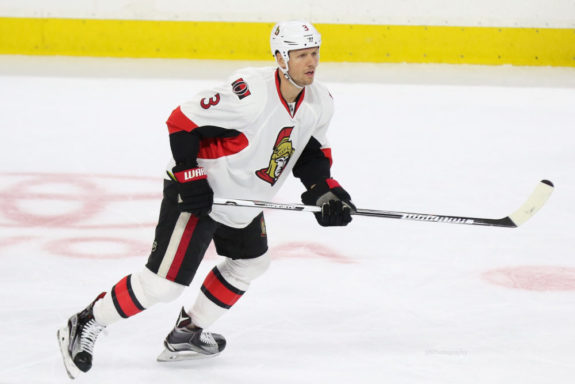
Time will tell how much the loss of Marc Methot will hurt the Senators and especially Erik Karlsson, his longtime defence partner in Ottawa.
The loss of Marc Methot in the expansion draft (later traded to Dallas) was certainly a blow to the Senators given his chemistry with Karlsson. Methot hasn’t been replaced to date, but Ottawa has some young defenders chomping at the bit, including 2015 first-rounder Thomas Chabot, who could step in and make an immediate impact. Fredrik Claesson opened a lot of eyes to his potential in the playoffs too, and Cody Ceci needs to step up now as well.
Up front, the Senators have decent depth but lack star power, though another rookie could step into the spotlight if fellow 2015 first-rounder Colin White debuts in an offensive role.
Chabot and White are worth getting excited about, but the Senators aren’t overly exciting as a whole and will be hard pressed to make the playoffs again.
6) Columbus Blue Jackets
There is plenty of excitement surrounding this team too, with the acquisition of Artemi Panarin, the development of Oliver Bjorkstrand and the potential of Pierre-Luc Dubois making the jump from junior, but Columbus was last season’s biggest overachiever and should fall back to earth to some degree. Remember, a lot of people were labelling the Blue Jackets as a lottery team at this time last year.
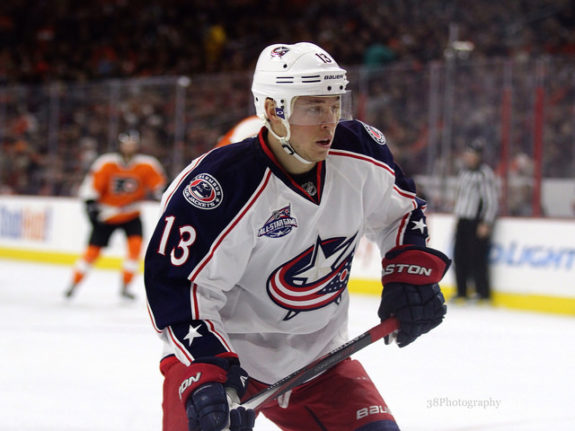
Are Cam Atkinson and the Columbus Blue Jackets for real? This season should be telling for both player and team.
Columbus, like Ottawa, will be in tough just to make the playoffs again. The Metropolitan Division is ultra-competitive, with Pittsburgh obviously the team to beat and depleted Washington still likely to finish ahead of Columbus. The New York teams, the Rangers and Islanders, will be pushing the Blue Jackets every step of the way, and Carolina could very well be this season’s Columbus as a surprising playoff team.
John Tortorella, the reigning coach of the year, will be working with a different dynamic offensively, deploying Panarin instead of Brandon Saad. One might think Saad was more of a Tortorella-type player, or that Panarin won’t be as effective without Patrick Kane. Time will tell on that front.
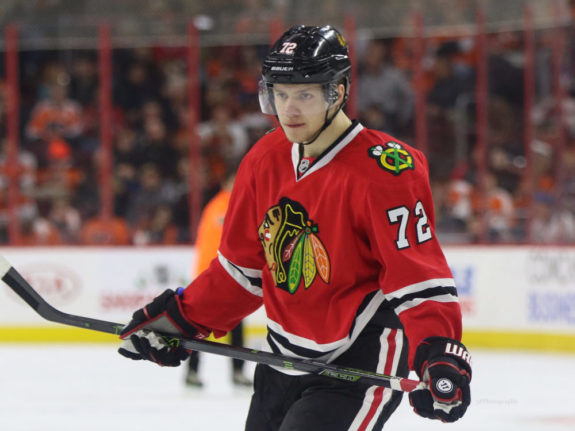
Artemi Panarin will boost the Blue Jackets’ offence, providing he clicks with Alexander Wennberg.
William Karlsson, an underrated talent, was sacrificed in the expansion draft, but the hope is that Dubois or Sonny Milano can fill that top-nine void. The Blue Jackets will still be a deep team up front, but expect Cam Atkinson to come back to earth a bit too.
Sergei Bobrovsky, the reigning goaltender of the year, will need a solid encore to keep Columbus near the top of the Metro standings. If he falters or gets hurt, the Blue Jackets will be a bubble team at best.
Defensively, Columbus needs more of the same from Zach Werenski and Seth Jones, and needs to hope for a healthy campaign from Ryan Murray, who has seemingly been cursed as a Blue Jacket and also the subject of trade chatter.
The Blue Jackets still have a solid, if unspectacular, roster and if Jarmo Kekalainen could swing a trade for Matt Duchene, that would probably cement Columbus as a playoff team again. As of now, the Blue Jackets’ post-season chances can be considered 50-50.
7) Los Angeles Kings
This is a stale team, on paper, that will be trying to get a second wind under an overhauled coaching staff, with longtime assistant John Stevens taking the reins from Darryl Sutter and surrounding himself with new voices in Dave Lowry, Don Nachbauer and “offensive coordinator” Pierre Turgeon. Rob Blake was also promoted to general manager, replacing Dean Lombardi, and Blake is going to put his stamp on this roster as the season progresses too.
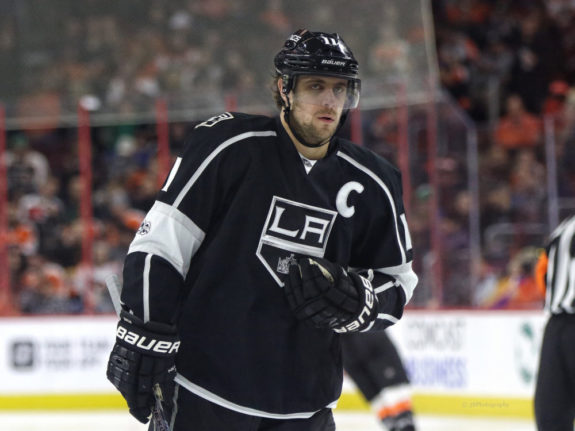
Can Anze Kopitar and the Los Angeles Kings bounce back in 2017-18? Or are their best years behind them?
The Kings added Mike Cammalleri, Christian Folin and Darcy Kuemper through free agency, while losing Brayden McNabb in the expansion draft. Cammalleri has lost a step in recent years — similar to L.A. veterans Dustin Brown and Marian Gaborik — so the Kings have to be counting on some bounce-back seasons. Even players in their prime, like Anze Kopitar and Jake Muzzin, need to rebound from mediocre campaigns.
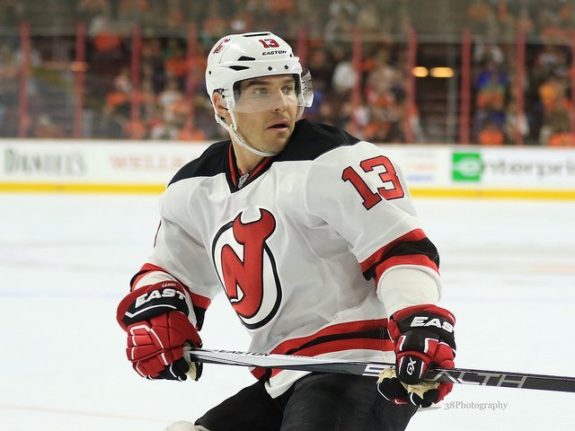
Speaking of bounce-back candidates, the Kings are hoping Mike Cammalleri can rediscover his scoring touch in his return to L.A.
The Kings have enough talent, or name value, to get back into the playoffs — especially if Jonathan Quick stays healthy and returns to form — but Los Angeles will be in tough in that ever improving Pacific Division. When the puck drops in October, the Kings will already be chasing the two other California teams, Anaheim and San Jose, and the two Alberta teams, Edmonton and Calgary. Quick will need to steal several wins against division rivals and that’s asking a lot of an aging goalie with a wonky groin.
The Kings won’t be a lottery team in 2017-18, but they might start trending in that direction, especially if Blake becomes a seller at the trade deadline. Los Angeles should start trending younger regardless, with Derek Forbort and Paul LaDue assuming bigger roles on the blue line, while the likes of Adrian Kempe, Nick Shore and perhaps Jonny Brodzinski get increased opportunities up front. A few breakout seasons amongst that bunch and L.A. could still challenge for a playoff berth.
8) Montreal Canadiens
This is a team still searching for its identity despite overachieving with a 103-point season thanks largely to Carey Price again. Claude Julien should have a positive impact in his first full season behind the bench, but the bar was set pretty high and the Canadiens will struggle to repeat as Atlantic Division champions — with Tampa Bay expected to bounce back, Toronto expected to take another step forward and even Buffalo looking like a sleeper.
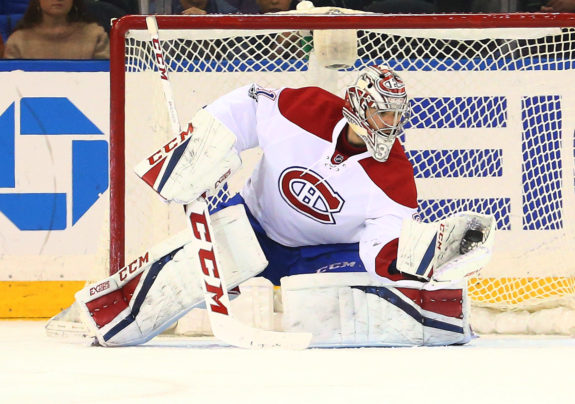
If Carey Price stays healthy, the Montreal Canadiens probably stay in the playoff picture, but the Atlantic Division is going to be wide open this season.
Marc Bergevin managed to land Jonathan Drouin — a budding Francophone star — but lost Russian scoring machine Alex Radulov, replaced by an injury-prone Ales Hemsky. Bergevin also locked up Alex Galchenyuk amid all kinds of trade rumours, but Galchenyuk hasn’t fared well at centre and that position remains Montreal’s biggest weakness.
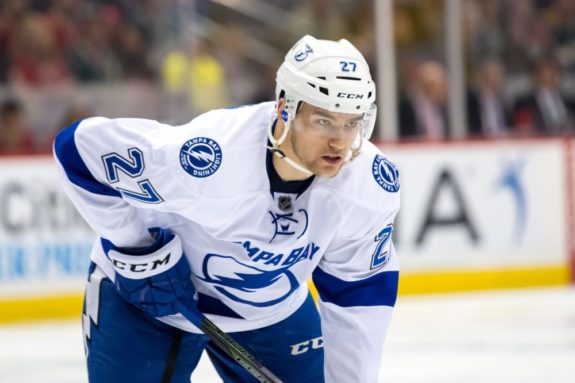
Jonathan Drouin is an exciting young talent for the Canadiens to build around, but Montreal’s roster is still strangely constructed.
The defence is going to be different, especially if Andrei Markov ends up signing elsewhere. The Canadiens traded away Nathan Beaulieu and top prospect Mikhail Sergachev while signing Karl Alzner and Joe Morrow as free agents and acquiring David Schlemko for pennies on the dollar. Shea Weber and Jeff Petry provide stability and continuity on the back end, but the Canadiens will need those new faces, along with relative newcomers Jordie Benn and Brandon Davidson, to plug some significant holes.
Price, now a $10-million-dollar man, remains the last line of defence and the key to Montreal’s success. Even the world’s best goalie needs run support, so Julien’s challenge will be to get the offence firing on all cylinders. That means getting the most out of Drouin and Galchenyuk, potentially as linemates, while getting Brendan Gallagher back on track and hoping Tomas Plekanec will be rejuvenated alongside fellow Czech, Hemsky. Maybe the Canadiens still sign Jaromir Jagr for an all-Czech line that could do some damage, but Montreal would like to leave the door open for a rookie forward like Charles Hudon.
All in all, the Canadiens are an above-average team — better than Ottawa and Boston — that should be playoff-bound providing Price doesn’t get hurt. But even with Price at his best, Montreal looks like a strong bet to take a step back and to be starting the 2018 postseason on the road, perhaps as a wild-card team.
9) Minnesota Wild
Bruce Boudreau’s teams are almost always good in the regular season, then not-so-good in the playoffs. That trend held true in his first season behind Minnesota’s bench, when the Wild won 49 games and racked up 106 points in the regular season before bowing out to the St. Louis Blues in the first round of the playoffs and in a series that only lasted five games.
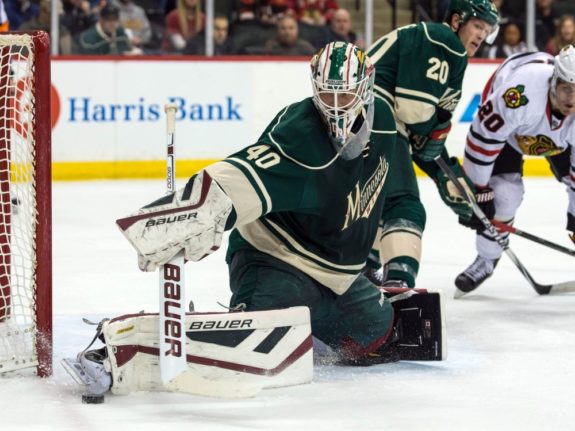
Devan Dubnyk had a Vezina-calibre start to last season and will need to rediscover that form this season for Minnesota.
Boudreau was able to press the right buttons for Mikael Granlund’s breakout year and Eric Staal’s resurgence, but Devan Dubnyk faded badly down the stretch and goaltending could be a concern going forward.
There has been a fair bit of roster turnover in Minnesota — not necessarily for the better — and there could also be some regression coming for a few key players like the aforementioned Staal, Mikko Koivu and maybe even Ryan Suter. They aren’t getting any younger, nor is Zach Parise, though the latter should be better, not worse in 2017-18.

Tyler Ennis is getting a fresh start in Minnesota and, if healthy, could be a productive top-nine forward for the Wild. Problem is, he’s been hurt more often than not lately.
Minnesota’s defence is still above average, even without Marco Scandella. The top four of Suter, Jared Spurgeon, Jonas Brodin and Matt Dumba are definitely a top-10 group league-wide. So if Dubnyk can provide adequate goaltending — along with his backup, be it Alex Stalock, Niklas Svedberg or Steve Michalek — the Wild should still be in the playoff picture. However, another 100-plus-point season seems unlikely with Dallas, Nashville and Winnipeg all trending upward in that Central Division.
10) Philadelphia Flyers
This team could really go either way — up or down — but Ron Hextall seems to be transitioning towards a younger roster. That was evidenced by trading Brayden Schenn to St. Louis for a first-round pick that turned into forward prospect Morgan Frost, even though Philadelphia also took back an older player in Jori Lehtera.
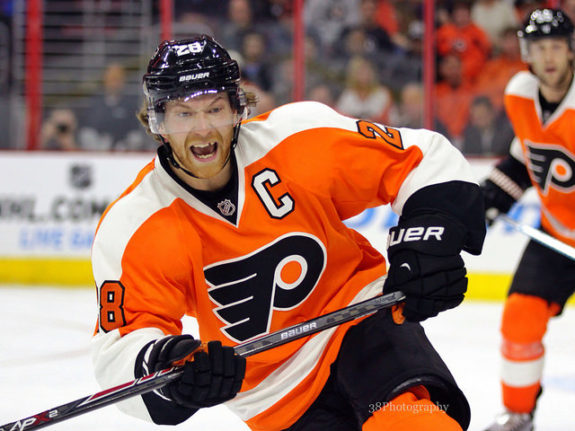
Claude Giroux still has five years left on his contract, but that won’t stop trade rumours from surfacing this season if the Flyers end up struggling.
The Flyers’ roster is a mixed bag, with a deep group of forwards, a weaker blue line than years past and persistent question marks in goal. The latter two elements are cause for concern, especially in a Metropolitan Division that leaves little room for error.
Claude Giroux, Jakub Voracek and Wayne Simmonds will continue to lead the offence up front, with this year’s second overall pick, Nolan Patrick, and sophomores Travis Konecny and Jordan Weal also chipping in. On the back end, the Flyers need a bounce-back season from Shayne Gostisbehere and for Ivan Provorov to build on his impressive rookie campaign. Mark Streit is gone, so those two are going to have to carry the torch and quarterback the power play.
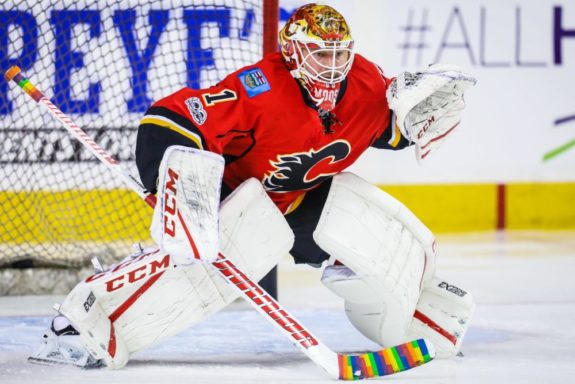
Brian Elliott is coming off an up-and-down campaign with Calgary and will be looking to redeem himself with Philadelphia after a lacklustre playoff performance.
Shutting down the opposition will be the bigger challenge for Philadelphia’s defence and the goaltending tandem of Michal Neuvirth and free-agent signing Brian Elliott. There isn’t a definitive starter between those two and the platoon system hasn’t exactly worked for the Flyers, with Elliott not necessarily an upgrade on Steve Mason. Therefore, goaltending could be this team’s downfall again in 2017-18, though the future looks promising between the pipes with a handful of prospects in the system — namely, Anthony Stolarz, Alex Lyon, Carter Hart, Felix Sandstrom and Matej Tomek.
The Flyers obviously have a plan and internal expectations, but the playoffs seem like a long-shot when stacking their roster up against Metro rivals. It appears more likely that Philadelphia will be a seller at the trade deadline, and missing the postseason for the second straight year could prompt Hextall to blow it up. Giroux is the face of the franchise, but even he could be on the move if this season heads south. Dave Hakstol could be fired as coach too, with some kind of shakeup inevitable if the playoffs prove unattainable again.
The Flyers lucked their way into this year’s draft lottery to land Patrick, but they might play (and trade) their way into next year’s lottery.